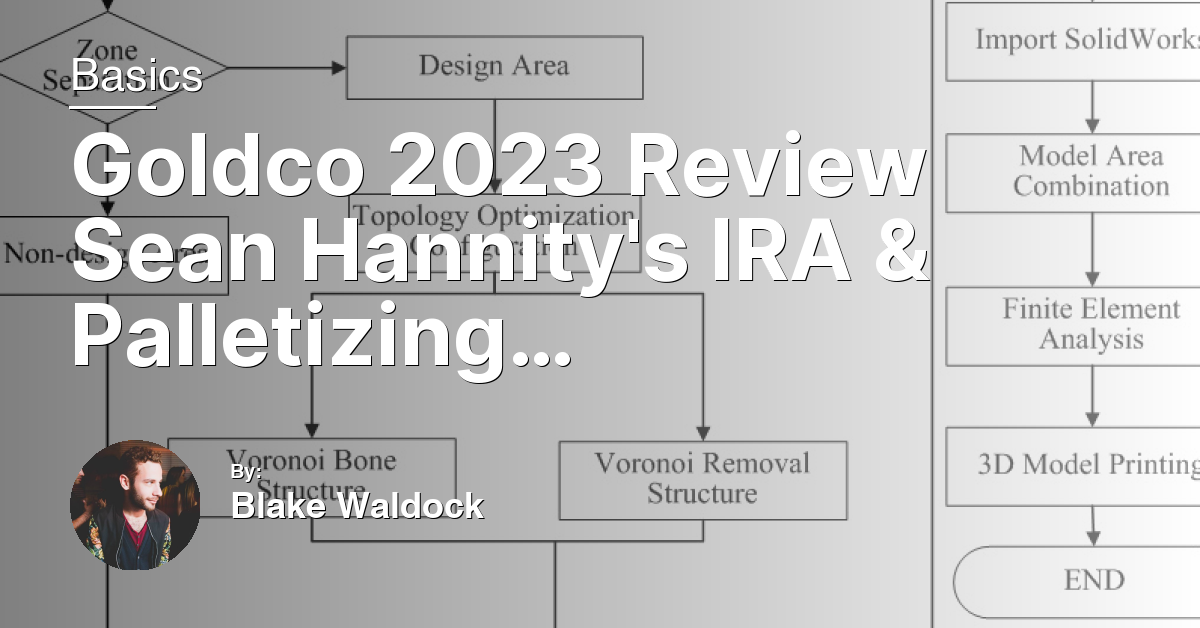In the ever-evolving world of investments, diversifying your portfolio is more than just a savvy move—it’s a necessity. Among the myriad of options available, gold stands out as a timeless asset, known for its stability and resilience against inflation. If you’re contemplating a more secure and diversified retirement plan, converting or transferring your Individual Retirement Account (IRA) to gold could be your golden ticket. This step-by-step guide is designed to illuminate the path for those looking to make this valuable switch, providing clear, actionable insights to ensure a smooth transition. Let’s embark on this journey to safeguard your future with the enduring value of gold.
Understanding IRA to Gold Conversion
You’ll need to select a reputable custodian for your Gold IRA. They will assist in transferring funds from your existing IRA without incurring IRS penalties for early withdrawal. The choice of gold can be in coins or bars, approved by the IRS for IRA investments.
Costs involved include setup fees, storage fees, and possibly seller’s fees, depending on the custodian and gold dealer. Consulting with a financial adviser is crucial to understand the implications for your tax situation and ensure compliance with IRS regulations. This conversion can be a valuable part of your wealth management and retirement planning strategy, offering a tangible asset in place of stocks or bonds.
Opening a Self-Directed Gold IRA
To open a Self-Directed Gold IRA, first identify a reputable custodian specialized in precious metals. These custodians are financial institutions authorized by the IRS to hold retirement account investments on behalf of the investor. It’s crucial to select one that offers transparent fee structures and comprehensive asset management services.
Next, complete the necessary paperwork required by your chosen custodian. This documentation will include an application form, a transfer request form (if you’re rolling over funds from another IRA), and possibly a storage agreement for the physical gold.
Funding your Gold IRA can be done through a transfer or rollover from an existing retirement account, such as a traditional or Roth IRA, without incurring IRS penalties. Ensure you discuss tax implications with a financial adviser to understand how the transfer affects your tax situation.
After your account is funded, you’ll select the gold investments for your IRA. Options typically include gold coins, bars, or bullion. Your custodian can guide you through the available choices, helping diversify your portfolio and manage risk. It’s imperative to stay informed about the current market prices and trends in precious metals to make educated investment decisions.
The Process of Transferring Funds
To transfer funds for converting your IRA into gold, you’ll need to start by selecting a self-directed IRA custodian experienced in precious metals. This custodian will facilitate your investment in gold by managing the transfer of funds from your existing IRA, Roth IRA, or pension plan to your new gold IRA.
Next, complete the necessary paperwork with your chosen custodian. This includes providing detailed information about your current IRA and the specifics of the gold investments you’re aiming for. Your custodian will then work with your current IRA provider to initiate the transfer of funds. This process can be done either through a direct transfer or an indirect rollover, with the former being the preferred method due to its simplicity and tax avoidance benefits.
It’s crucial to understand that there may be fees involved in the transfer process, which can vary depending on the custodian and the amount of money being transferred. Once the funds have arrived in your new gold IRA, you’ll work with your custodian to select the gold assets (coins, bars, etc.) you wish to purchase. This step is vital for diversification and risk management within your investment portfolio.
Throughout this process, ensure you’re compliant with all Internal Revenue Service (IRS) regulations to avoid unnecessary penalties or taxes. Proper research and a clear understanding of both the benefits and risks associated with gold investment are essential for managing your retirement wealth effectively.
Selecting and Purchasing IRA-Qualified Precious Metals
When selecting and purchasing IRA-qualified precious metals, it’s crucial to understand the IRS guidelines to ensure compliance. These metals include gold, silver, platinum, and palladium, and they must meet specific fineness requirements. Investors typically opt for coins or bars, with popular choices being American Eagle and Canadian Maple Leaf coins.
Working with a reputable dealer is essential to avoid counterfeit products and ensure fair pricing. Prices for precious metals fluctuate, so timing your purchase can affect your investment’s initial value. Additionally, engaging a custodian experienced in self-directed IRAs is vital for the correct handling and storage of your metals, as the IRS mandates that these assets be stored in a secure facility.
Consider the fees associated with the purchase and storage of precious metals, as these can impact the overall cost of your investment. Research thoroughly to understand the fee structure, which can include setup fees, annual storage fees, and potential insurance costs for your metals. Making informed decisions in this step is crucial for effective risk management and asset diversification within your retirement portfolio.
Storing Your Gold in a Secure Depository
Storing your gold in a secure depository is a critical step after converting or transferring your IRA into gold. Choose a depository that complies with IRS regulations to ensure your investment is safe and qualifies for tax advantages. Key considerations include the facility’s security features, insurance coverage, and the reputation for reliability.
Many investors opt for a self-directed IRA custodian that offers depository services, streamlining the process of asset allocation and management. Ensure the chosen depository has a robust system for safeguarding physical assets like gold bars and coins against theft, loss, and damage.
Depositories located within the United States, such as in states like Oregon, often provide an added layer of convenience and legal protection. Confirm that your depository choice aligns with your investment strategy, whether it’s diversification, wealth management, or hedging against inflation.
Navigating Gold IRA Transfer Fees
When considering the transfer of your IRA into gold, it’s crucial to be mindful of the transfer fees involved. These fees can vary widely among custodian banks and firms specializing in precious metals. The fees are typically for the service of moving your assets from one investment vehicle to another, specifically into gold coins or bars.
To minimize these costs, research and compare the fee structures of different custodians. Some may offer flat rates, while others charge a percentage of the assets transferred. Additionally, inquire about any hidden fees for storage in a bank vault or insurance costs for your gold assets.
Remember, the goal of converting your IRA to gold is often to achieve diversification in your portfolio, not to incur excessive costs that can eat into your investment. Careful planning and negotiation can sometimes result in waived or reduced fees, especially if you’re transferring a significant amount of assets.
Lastly, always ensure that the custodian you select complies with Internal Revenue Service (IRS) regulations to avoid any unnecessary tax implications. Making an informed decision can help maximize your investment and secure your financial future.
Tax Implications of Gold IRA Transfers
When converting or transferring your IRA to gold, understanding the tax implications is crucial. The IRS treats gold, whether in bars or coins, as a collectible when held in IRAs. This means that gold investments are subject to a different tax treatment compared to traditional IRA assets like stocks or bonds.
If you transfer assets from your IRA to purchase gold, this transaction is considered a taxable event. However, opting for a direct rollover from your current IRA to a Gold IRA custodian can help avoid immediate taxes. This method ensures that the funds are transferred directly between custodians without the money being payable to you, maintaining the tax-deferred status of your investment.
It’s also essential to choose an IRS-approved custodian specialized in precious metals to ensure compliance and safeguard your investment. This move not only aligns with a strategy for diversification in your retirement portfolio but also secures your assets in a tangible form, often viewed as a hedge against inflation and currency devaluation.
Benefits of Investing in a Gold IRA
Investing in a Gold IRA offers tangible benefits in personal finance and investment management. It serves as a critical vehicle for diversification, reducing the risk associated with stock market volatility, bond price fluctuations, and the unpredictability of real estate investments. By allocating assets to precious metals, investors safeguard their portfolio against the devaluation of paper currencies, particularly the United States dollar.
A Gold IRA can also serve as a hedge against inflation and economic downturns. Gold historically maintains its value, making it a stable investment compared to more volatile options like stocks and bonds. This stability is crucial for long-term financial planning, especially for retirement savings and pension funds.
Furthermore, investing in gold through an IRA may offer tax advantages. The IRS allows certain types of gold investments, such as coins and bullion, to be held within an IRA, potentially offering tax deductions or deferrals. This adds a layer of tax efficiency to your investment strategy, under the guidance of a qualified custodian bank.
Lastly, converting or transferring your IRA to gold is a straightforward process, providing not just financial security but also ease of management and peace of mind for investors looking to balance their portfolio with precious metals.
Managing Your Gold Investment and Rebalancing
Once your IRA is converted to gold, ongoing management and rebalancing are critical to maintaining a healthy portfolio. Regularly review your asset allocation to ensure it aligns with your financial goals, considering the volatile nature of gold prices compared to more stable investments like bonds or stocks.
Diversification remains a key strategy; don’t let gold dominate your IRA. Mix in other assets such as equities, bonds, or real estate to spread risk. Consult with your custodian bank or a financial advisor to make informed decisions about rebalancing, especially if the market shifts significantly.

